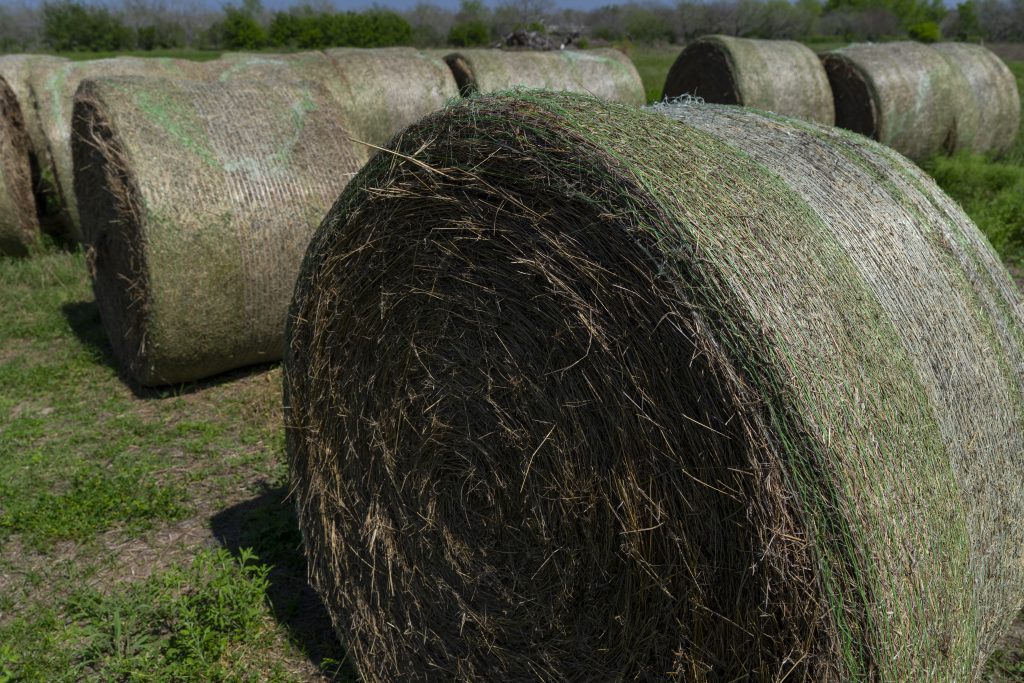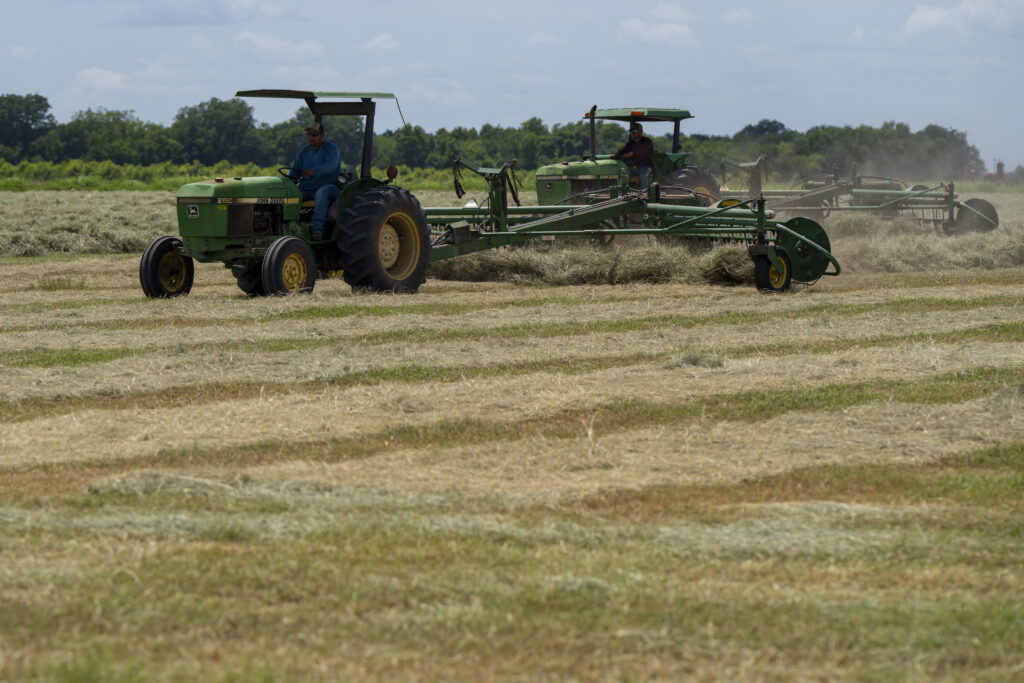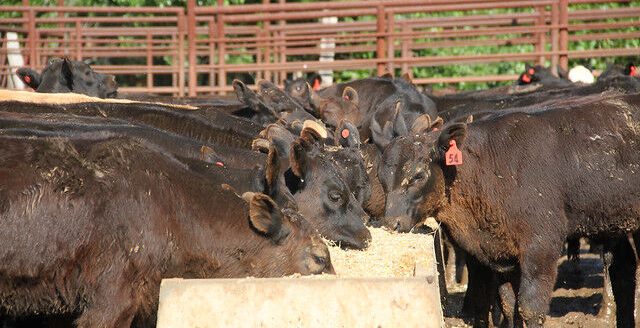Current hay supplies across the state depend on conditions of winter-planted forage crops and rainfall, according to Texas A&M AgriLife Extension Service experts.

Winter forages such as ryegrass and oats have helped supplement hay feeding, while ranchers who opted not to plant winter forage crops have relied solely on available hay supplies.
“It’s hit or miss, depending on rainfall received across Texas,” said Vanessa Corriher-Olson, Ph.D., AgriLife Extension state forage specialist and professor in the Department of Soil and Crop Sciences, Overton. “East Texas received some good moisture later in the fall, but some folks didn’t. It’s really a question of how many folks planted winter forage this fall and didn’t get the needed rainfall. They are relying more on feeding hay than in the past.”
Hay prices, production outlook
Corriher-Olson said hay prices have been moderate over the past year.
“They have not been exceptionally high, and I haven’t heard anyone complain,” she said. “(Prices) are reasonable, considering everything else compared to other input costs. Supplies right now in East Texas have been sufficient.”
Prospects for a good hay production season hinge on moisture and the amount of fertilizer applied. That decision will vary from producer to producer, Corriher-Olson said.
“Even if we do have good moisture, people may decide to step back on fertilizer and nitrogen applications,” she said. “If they do, that’s going to have an effect on harvest yields. It remains to be seen, but the big question marks are weather and costs such as fertilizer, herbicide, equipment and diesel.
“Those who invest in fertilizer and receive rainfall will have good production. Those who step back may not have as much hay production. Really, only time will tell.”
Meanwhile, a substantial hay harvest in Central and South-Central Texas last year is proving to pay dividends, considering the dry pattern producers experienced this winter. That’s led to more hay feeding supplementing the lack of available forage.
“Our region saw a bountiful spring 2024 hay season, leaving many producers with a surplus of hay for winter feeding,” said Kara Matheney, AgriLife Extension agent for Washington County.
“We have been dry for a while and producers have been feeding hay steadily through the winter months — not due to extreme cold but to dry conditions that prevented planting or reduced stands of winter grazing like rye and oats.”
Matheney said rainfall has been less than adequate this winter, presenting challenges.
“Soil moisture can still be classified as marginal at best, and subsoil moisture is inadequate. We are hopeful for spring rains to help kick off a plentiful growing season for our warm-season grasses but the weather outlooks have a few more opportunities for cooler weather on the horizons for us.”
Chadd Caperton, AgriLife Extension agent for Brazos County, said producers in the Brazos Valley region went into winter with abundant hay supplies after a successful hay harvest season.
“Hay supplies are in good shape so far due to last year’s bumper crop,” Caperton said. “I’m advising producers to be mindful of the moisture situation going into the spring as we are behind.”
Bobby McCool, AgriLife Extension agent for San Patricio County, said hay supplies are good for now.
“However, those with good hay supplies are not selling as much due to the dry spell we are in and are concerned with ensuring they have enough to get through it,” he said. “West of us, they are hurting for forage and hay. They have been without rain for a while in spots.”
Fertilizer, input costs
Corriher-Olson stressed the importance of producers getting soil samples before making fertilizer purchases.
“I want to reiterate the importance of a soil sample since it tells not only how much nitrogen is needed, but phosphorus and potassium needs,” she said. “For a $12 test, it’s inexpensive compared to the cost of fertilizer. AgriLife Extension can make nitrogen recommendations based on a desired forage production goal, but phosphorus, potassium and lime shouldn’t be applied without a soil test.”
A pasture deficiency in potassium can become the limiting factor in forage production, Corriher-Olson said.
“Despite doing everything else right, a producer can see an impact on yield if the soil is deficient in a single nutrient like potassium,” she said. “Thinning of Bermuda grass stands due to potassium deficiency even if applying high rates of nitrogen can be common in sandy soils. The cheapest and easiest thing anyone can do in making fertilizer decisions is a soil test.”
Nitrogen prices in June 2024 ran $450-$530 a ton. Nitrogen is still approximately $450 a ton. Phosphorus prices in 2024 were $700-$800 a ton. Currently, phosphorus prices are the same as 2024 running $700-$800 ton.
“One thing people need to keep in mind is any changes in tariffs and how they can have an effect on the fertilizer market,” Corriher-Olson said. “It’s a world market, things going on beyond and outside Texas can affect us.”
PHOTO: Prospects for a good hay production season hinge on moisture and the amount of fertilizer applied. That decision will vary from producer to producer. (Michael Miller/Texas A&M AgriLife)




